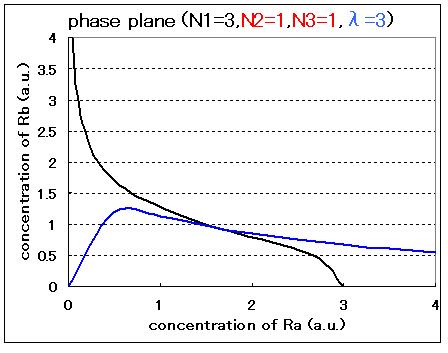Tokyo/Works/Formulation
From 2007.igem.org
| Line 5: | Line 5: | ||
<br>[[Tokyo/Formulation/1.toggle model |Step1]] [[Tokyo/Formulation/2.toggle model with hybrid promoter |Step2]] [[Tokyo/Formulation/3.AHL-experssing model|Step3]] | <br>[[Tokyo/Formulation/1.toggle model |Step1]] [[Tokyo/Formulation/2.toggle model with hybrid promoter |Step2]] [[Tokyo/Formulation/3.AHL-experssing model|Step3]] | ||
<br> | <br> | ||
| + | |||
| + | |||
| + | == Numerical analysis for single cell == | ||
| + | |||
| + | |||
== [[Tokyo/Formulation/1.toggle model |Step1. Single cell model:mutual inhibition ]] == | == [[Tokyo/Formulation/1.toggle model |Step1. Single cell model:mutual inhibition ]] == | ||
Revision as of 20:32, 26 October 2007
Works top 0.Hybrid promoter 1.Formulation 2.Assay1 3.Simulation 4.Assay2 5.Future works
Numerical analysis for single cell
Step1. Single cell model:mutual inhibition
First, the qualitative nature was analyzed by simple dimensionless differential equations for this mutual inhibition system. The results of phase plane analysis for the equations suggested that the values of Hill coefficients were especially important in order that the system had the bistability corresponding to A and B states.
⇒ see more
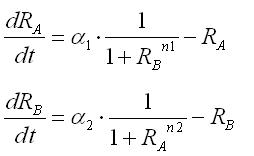
Step2. Single cell model with hybrid promoter
Second, the effect of hybrid promoter was introduced into the single cell model. In the case of the model with hybrid promoter, the contribution from the repression of the promoter by LacI and that from the activation by AHL should be considered.; that is, the factor of AHL contribution was added to the differential equations for RB, resulting in the dependence of the phase plane on the AHL concentration. As a result of phase plane analysis for the equations, the system was monostable in the case of lower AHL concentration; whereas it was bistable in the case of higher AHL concentration. The values of Hill coefficients were important for the system bistability even in this case.
⇒ see more
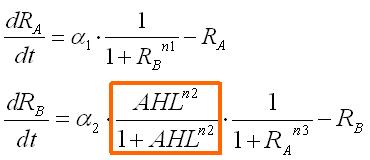


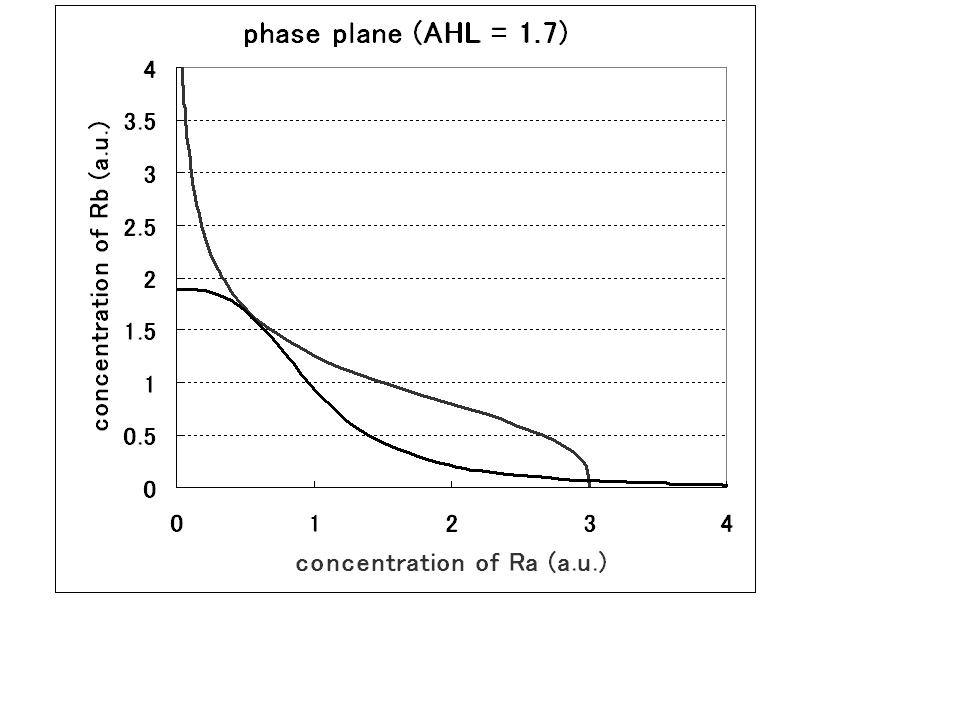
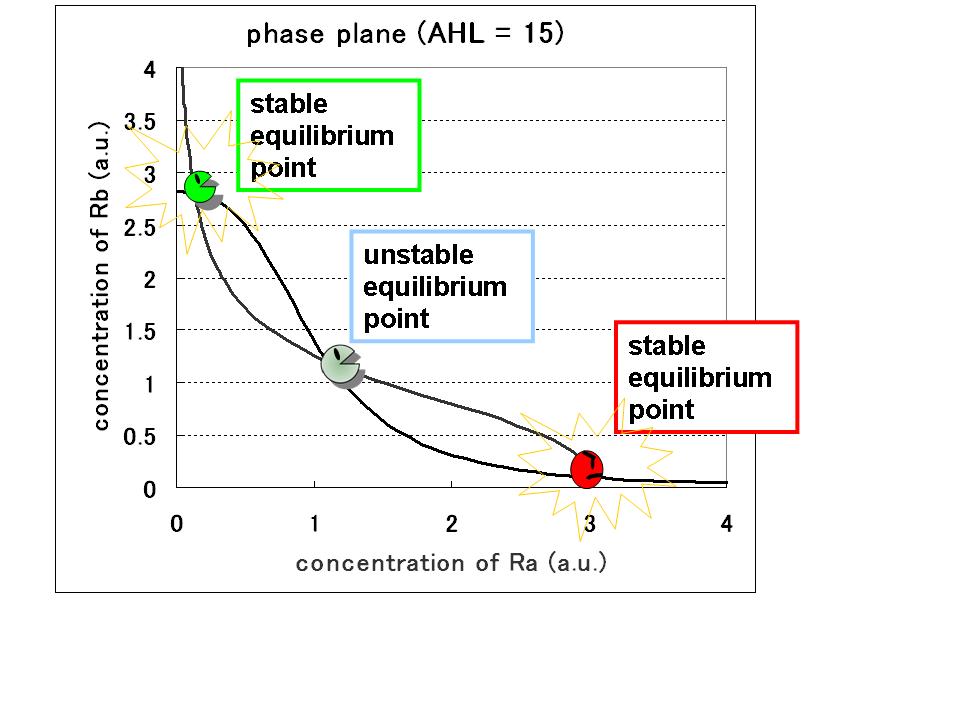
Step3.Single cell model with hybrid promoter and cell-produced AHL
Third, the system with hybrid promoter was expanded into the system using cell-produced AHL. Here, the new parameter λ was introduced to represent the producing rate of AHL by the promoter A. As a result of phase plane analysis, the values of Hill coefficients were important for the system bistability even in this case. The results of the numerical analysis from Step1 to Step3 suggest the importance of the values of the Hill coefficients in this system. However, adjustments of Hill coefficients by DNA sequence modification are much more difficult than those of production rate parameters; changes in RBS -35 box, or -10 box allow production efficiency. We thus practically determined the values in the next wet experiments to confirm feasibility of our model.
⇒ see more
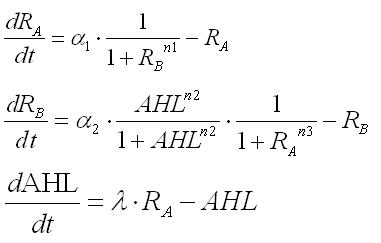
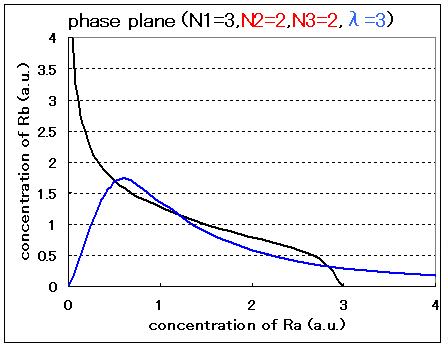
Before(Hybrid promoter) << Formulation >> Formulation Step.1 >>>> Next(Assay1)
